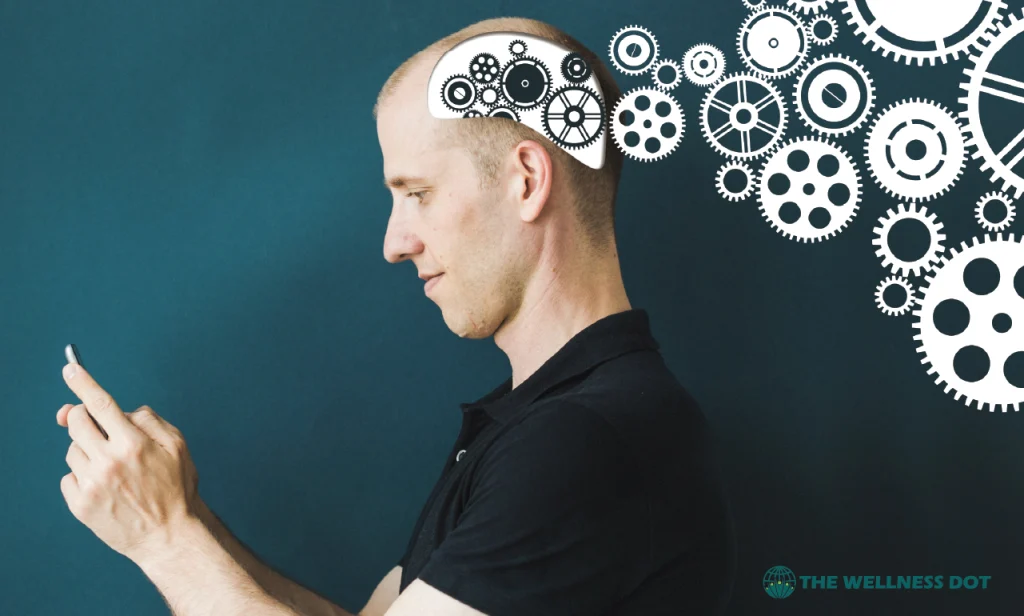Table of Contents
Introduction
Welcome to a journey that extends far beyond the conventional understanding of health. When we speak of wellness, we’re referring to a vibrant tapestry woven with the threads of our physical, emotional, intellectual, and spiritual lives. It’s a holistic concept, one that infuses every aspect of our existence and dictates the quality of our every day.
Wellness is not merely the absence of disease or infirmity; it’s the pursuit of a state of complete physical, mental, and social well-being. It’s about thriving, not just surviving. This pursuit is an active process, a conscious set of choices that we make continuously, shaping our lives and sculpting our well-being.
As we peel back the layers of what it means to be well, we uncover multiple dimensions of wellness, each a crucial piece of the puzzle that is our overall health. These dimensions—physical, emotional, intellectual, social, spiritual, environmental, occupational, and financial—interact and interrelate in ways that can profoundly impact our overall quality of life.
Understanding these dimensions is like having a map to navigate the complex terrain of our well-being. It empowers us to become aware of our current state, recognize where we aspire to be, and chart a course towards a more enriched, balanced, and fulfilling existence. This is wellness in its truest form—an ever-evolving, dynamic process that beckons us to grow, thrive, and realize our utmost potential.
So, let’s embark on this exploration together, unraveling the dimensions of wellness and discovering how we can integrate them into the fabric of our daily lives. It’s a path that promises a richer, more vibrant life, and it begins with a single, mindful step.
The Global Perspective on Wellness
What does global wellness encompass?

In our interconnected world, wellness transcends borders and cultures, becoming a universal goal that unites us all. Global wellness is an expansive concept that seeks to elevate the physical and mental health of people everywhere, acknowledging that well-being is a shared human aspiration, regardless of geography.
Initiatives aimed at global wellness recognize that health challenges know no boundaries and that the solutions, therefore, require a collective effort. These initiatives are diverse, ranging from campaigns to increase access to clean water and nutritious food, to worldwide mental health programs, to the promotion of physical activity and the fight against non-communicable diseases.
At the forefront of this global movement is the World Health Organization (WHO), which plays a pivotal role in defining what wellness means on an international scale. The WHO doesn’t just view wellness as the absence of illness; rather, it promotes a holistic approach, where optimal health is seen as a resource for everyday life. This organization sets standards and provides guidelines that help shape policies and create environments conducive to improving health and well-being.
By fostering an environment where wellness can thrive, the WHO and similar entities aim to ensure that individuals and communities can enjoy a higher quality of life and reach their full health potential. This is the essence of global wellness—a vision that sees each person’s well-being as part of a larger tapestry of public health, woven together with the threads of policy, education, and community support.
Contributions of Various Wellness Institutes Worldwide
Wellness institutes around the globe serve as beacons of health, guiding individuals and communities towards a more holistic approach to well-being. These organizations are the architects of wellness frameworks, the educators of health professionals, and the advocates for policies that support a healthier society.
Take, for instance, the National Wellness Institute (NWI). This organization has been instrumental in shaping the way we think about wellness. It operates on the principle that wellness encompasses far more than just physical health; it includes emotional stability, mental sharpness, social connectivity, and spiritual enrichment. By promoting this multifaceted approach, the NWI encourages people to see wellness as a balanced portfolio, rather than a single stock.
The NWI, along with its global counterparts, provides resources, education, and certification programs that empower health professionals to integrate holistic wellness strategies into their practices. These institutes also conduct research that fuels innovative approaches to wellness, ensuring that the field is always evolving and adapting to the needs of a changing world.
Moreover, wellness institutes advocate for a shift in societal norms—where workplaces prioritize the well-being of their employees, schools nurture the holistic development of children, and communities come together to create environments that are conducive to good health. They understand that wellness is a collective effort and that the environments in which we live, work, and play can be powerful allies in our quest for optimal health.
By fostering a holistic approach to health and well-being, these institutes are not merely helping individuals to live better lives; they are also contributing to the creation of a healthier world—one where wellness is woven into the very fabric of society.
The Eight Dimensions of Wellness
Physical Wellness: The Foundation of Health

Physical wellness is often considered the cornerstone of a vibrant and balanced life. It’s the dimension that most visibly reflects our state of well-being and one that has a profound impact on our overall sense of health.
Exercise, Nutrition, and Sleep: Fuel for Good Health and Weight Management
Exercise: Regular physical activity is a critical component of physical wellness. It strengthens the heart, improves circulation, and increases endurance. But its benefits extend beyond the physical, positively influencing mood and mental health, providing a natural antidote to stress, and enhancing cognitive function. Exercise isn’t just about maintaining an optimal weight or building muscle—it’s about fueling the body to perform at its best in every aspect of life.
Nutrition: What we eat is what we become. The food choices we make act as the fuel that powers our body’s systems. A balanced diet rich in fruits, vegetables, lean proteins, and whole grains provides the nutrients necessary for energy, growth, and repair. Good nutrition is not about strict limitations or depriving oneself—it’s about eating in a way that systematically improves health, supports mental acuity, and boosts immunity, all while being enjoyable and sustainable.
Sleep: Often underrated, sleep is a fundamental pillar of physical wellness. Quality sleep is as crucial to our bodies as a healthy diet and regular exercise. It’s during sleep that our bodies repair themselves, our brains consolidate memories, and hormones that regulate growth and appetite are balanced. Adequate sleep is a critical factor in weight management, as it helps regulate the hormones that affect our appetite and reduces the risk of obesity-related diseases.
Together, these three elements—exercise, nutrition, and sleep—form a triad that underpins physical wellness. They work in concert to not only manage weight but also to create a foundation of good health that supports and enhances the other dimensions of wellness. When we give our bodies the exercise, nutrition, and rest they need, we are setting the stage for a more productive, energetic, and fulfilling life.
Emotional Wellness: Understanding Our Feelings

Emotional wellness is a delicate, deeply personal domain that involves navigating our feelings, fostering a positive inner dialogue, and developing resilience in the face of life’s inevitable ups and downs. It’s about cultivating an awareness and acceptance of our emotions, allowing us to express feelings freely and manage them effectively.
Stress Management and Emotional Intelligence as Part of Overall Wellness
Stress Management: In our fast-paced world, stress can be a common, if unwelcome, companion. Managing stress is not about eliminating it entirely—after all, some stress can be a motivating force—but about mastering the art of balance. Effective stress management involves recognizing the triggers, understanding our responses, and developing strategies such as mindfulness, relaxation techniques, or engaging in hobbies that help dissipate tension. It’s about building a toolkit of coping mechanisms that allows us to navigate through stressful periods with grace and emerge with our well-being intact.
Emotional Intelligence: Emotional intelligence is the unsung hero of emotional wellness. It’s the ability to identify, understand, and manage not only our own emotions but also to empathize with the emotions of others. High emotional intelligence can lead to better relationships, improved mental health, and greater personal and professional success. It involves a level of self-awareness that helps us to tune into our feelings without being overpowered by them, and a set of social skills that enables us to communicate effectively, negotiate conflict, and build stronger bonds.
Emotional wellness, with stress management and emotional intelligence at its core, is a vital aspect of our overall wellness. It empowers us to move through the world with a sense of confidence and calm, to enjoy life’s highs, weather its lows, and emerge as more compassionate, understanding individuals. It’s not just about feeling good—it’s about creating a rich, emotionally intelligent life that enhances every other aspect of our well-being.
Intellectual Wellness: Nurturing the Mind

Intellectual wellness is the spark that ignites our curiosity, drives our desire to learn, and fuels our creativity. It’s an active engagement with the world through learning, problem-solving, and artistic expression. This dimension of wellness encourages us to stretch our minds, seek out new challenges, and cultivate a rich inner life.
Lifelong Learning and Creativity to Enrich Intellectual Wellness
Lifelong Learning: The pursuit of knowledge is a never-ending journey that doesn’t cease upon graduation or retirement. Lifelong learning is about keeping the mind agile and engaged, whether it’s through reading, taking courses, attending lectures, or simply engaging in thoughtful conversation. It’s about maintaining a sense of wonder and inquisitiveness, and recognizing that every experience—whether success or setback—is an opportunity to learn and grow.
Creativity: Creativity is the playground of the mind. It allows us to explore new realms of possibility, to innovate, and to express our innermost thoughts and feelings. Engaging in creative activities—be it painting, writing, music, or any form of artistic expression—enriches our intellectual wellness by providing a unique outlet for self-exploration and communication. It’s not about the end product but about the process of creation and the joy and fulfillment that it brings.
Intellectual wellness is about embracing the life of the mind and recognizing that our mental capacities are vast and varied. It’s about giving ourselves permission to be eternally curious, to ask questions, and to seek out new experiences that challenge our understanding. By nurturing our intellect and creativity, we not only enrich our own lives but also bring greater depth and insight to our interactions with the world around us.
Social Wellness: Connecting with Others

Social wellness is the harmonious thread that connects us to the people around us. It’s about building and nurturing relationships that enrich our lives and support us through times of joy and hardship. This dimension of wellness recognizes the importance of human connection, community, and a sense of belonging.
Building Healthy Relationships and a Positive Social Network
Building Healthy Relationships: The quality of our relationships can have a profound impact on our well-being. Healthy relationships are those that are built on trust, respect, and a mutual exchange of support. They are the friendships that encourage us to be our best selves and the family bonds that provide a foundation of stability. Cultivating these relationships requires effort, communication, and empathy. It’s about being present for others, actively listening, and showing appreciation. In turn, these relationships offer a source of love, understanding, and connection that is essential to our social wellness.
A Positive Social Network: Beyond our close personal relationships, a broader social network also contributes significantly to our social wellness. This includes acquaintances, colleagues, and even the wider community. A positive social network can provide diverse perspectives, opportunities for collaboration, and a sense of being part of something larger than ourselves. Engaging in community service, joining clubs or groups with shared interests, and attending social gatherings can all expand our social circles and enhance our sense of community.
Social wellness is about finding our tribe and fostering a network that supports and uplifts us. It’s about recognizing that while our journey through life is our own, it is the people we share it with that add color, meaning, and joy to our experiences. By investing in our social connections, we not only enhance our own lives but also contribute to the well-being of our communities.
Spiritual Wellness: Seeking Purpose

Spiritual wellness is a deeply introspective journey that transcends the physical and mental realms, guiding us towards a greater purpose and connection with the universe. It’s not confined to religious practice; it’s about seeking a core set of values, finding meaning in our existence, and aligning our actions with our beliefs.
Finding Meaning and Purpose for Spiritual Well-Being
Finding Meaning: Life’s significance often comes into focus when we ponder our place in the larger scheme of things. Finding meaning is about uncovering what truly resonates with us, be it through nature, art, philosophy, or religion. It’s the sense of fulfillment we get from contributing to the greater good, the clarity that comes from understanding our personal values, and the peace that follows the realization of our place in the cosmos.
Purpose: Purpose is the compass that directs our life’s journey. It’s the driving force that motivates us to set goals and strive for something beyond ourselves. Whether it’s nurturing family, excelling in our careers, or volunteering for a cause we’re passionate about, purpose gives our actions direction and infuses our daily lives with meaning.
Spiritual wellness is about harmony between what we do and what we believe, the congruence of our actions and our values. It’s about the continuous search for meaning and purpose in all aspects of life, which in turn, fosters a sense of inner tranquility and hope. In nurturing our spiritual wellness, we not only enrich our own lives but also bring forth our best selves to the world around us.
Environmental Wellness: Respecting Our Surroundings

Environmental wellness is an expression of the interdependence between personal well-being and the health of our planet. It’s about recognizing the impact our daily habits have on the natural world and understanding that a thriving environment is foundational to our own health and happiness.
Sustainable Living and Conservation to Foster Environmental Wellness
Sustainable Living: Embracing sustainability in our lifestyles is a commitment to making choices that are in harmony with the Earth’s well-being. This can range from reducing waste and conserving energy to supporting eco-friendly initiatives and using renewable resources. Sustainable living is about making informed decisions that help minimize our ecological footprint, ensuring that the natural beauty and resources of our planet are preserved for future generations.
Conservation: Conservation efforts are crucial in maintaining the balance of our ecosystems. This involves protecting wildlife, preserving natural habitats, and being mindful of the use of water and other natural resources. By engaging in conservation, we contribute to the health of our environment and, by extension, to our own wellness. It’s a proactive approach that not only safeguards the planet but also reinforces our connection to the world around us.
Environmental wellness is a reflection of how we choose to interact with the earth and its resources. It’s about cultivating a relationship with nature that is based on respect and stewardship. By adopting practices of sustainable living and conservation, we not only ensure the vitality of our environment but also support a healthier, more sustainable life for ourselves and our communities.
Occupational Wellness: Fulfillment at Work

Occupational wellness is the satisfaction and enrichment one derives from their work. It’s about feeling valued and fulfilled in one’s job and career, which is a significant part of adult life. This dimension of wellness is crucial, as it intertwines with our identity, sense of purpose, and overall happiness.
Career Satisfaction and Work-Life Balance for Personal Satisfaction
Career Satisfaction: True career satisfaction comes from doing work that aligns with your values and allows you to use and develop your strengths and skills. It’s not just about the paycheck at the end of the month but also about the sense of accomplishment and pride you feel from your contributions. It involves setting career goals that are not only ambitious but also reflective of your personal ethics and interests, fostering a sense of achievement and growth.
Work-Life Balance: Achieving a harmonious work-life balance is essential for occupational wellness. It’s the equilibrium that allows for productivity and success at work while still having time and energy for personal activities and relationships. This balance is different for everyone; it might mean flexible working hours, telecommuting options, or simply being disciplined about when work begins and ends each day. The goal is to minimize stress and prevent burnout, ensuring that work is a part of life, not all of it.
Occupational wellness is about more than just enduring the daily grind; it’s about thriving in our chosen professions and feeling a sense of harmony between our work and personal lives. When we achieve this balance, we not only enhance our own personal satisfaction but also contribute more effectively to our workplaces and communities.
Financial Wellness: Security and Freedom

Financial wellness is the peace of mind felt when we are not burdened by financial stress. It’s the sense of security that comes from having a solid financial plan in place, which allows for both the freedom to enjoy the present and the confidence to face the future. This dimension of wellness is about building a stable financial foundation that supports our overall life goals.
Financial Planning and Stress Reduction to Improve Your Physical and Mental Health
Financial Planning: Effective financial planning is the cornerstone of financial wellness. It involves setting realistic goals, creating budgets, saving diligently, and investing wisely. It’s about understanding your financial situation, managing your debts, and preparing for emergencies. Financial planning is not just about accumulating wealth; it’s about making strategic choices that enable you to live within your means while securing your long-term financial future.
Stress Reduction: Financial stress can take a significant toll on both your physical and mental health. Worrying about bills, debt, and savings can lead to anxiety, depression, and even physical symptoms like headaches or sleep problems. By taking control of your financial health through careful planning and management, you can reduce this stress, leading to a healthier and more productive life. Learning to manage finances effectively can also provide a sense of accomplishment and self-efficacy, further contributing to your overall well-being.
Financial wellness is about more than just the numbers in your bank account; it’s about the quality of your life and the reduction of stress through financial self-care. When we achieve financial wellness, we unlock the doors to freedom and security, allowing us to make choices that enrich our lives and the lives of those around us.
Wellness is Multidimensional: Integrating the Dimensions into Daily Life
The Interconnectivity of Wellness Dimensions and How They Interrelate
Wellness is not a linear path but a complex web of interconnected dimensions, each influencing and enhancing the others. The multifaceted nature of wellness means that our physical health can affect our mental state, our emotional well-being can impact our social connections, and our financial stability can influence our sense of security and freedom.
This interconnectivity suggests that a setback in one area can ripple through to others, just as a positive change can have a cascading effect, improving our overall quality of life. For instance, regular physical activity not only bolsters our physical health but can also elevate our mood and mental clarity, thereby enhancing our emotional and intellectual wellness. Similarly, achieving financial wellness can alleviate stress, which in turn may improve our physical health and social relationships.
Understanding how these dimensions interrelate allows us to approach wellness holistically, recognizing that nurturing one aspect of our well-being can lead to improvements across the entire spectrum of wellness.
Practical Strategies for Balanced Wellness and Making Healthy Choices

To integrate the dimensions of wellness into daily life, consider these practical strategies:
- Set Realistic Goals: Start with small, achievable goals in each dimension of wellness. This could be as simple as a daily walk to improve physical wellness, a budget plan for financial wellness, or a weekly get-together with friends for social wellness.
- Create a Wellness Plan: Develop a personalized wellness plan that addresses each dimension. Include activities like mindfulness or meditation for emotional wellness, continuous learning for intellectual wellness, and volunteer work for social and spiritual wellness.
- Seek Balance: Balance does not mean giving equal time to each dimension; it means giving appropriate time to each based on your current life circumstances. Listen to your body and mind, and adjust your focus as needed.
- Build a Support System: Surround yourself with people who support your wellness goals. This could be a workout buddy, a financial advisor, or a mentor who encourages your personal growth.
- Reflect and Reassess: Regularly take stock of your wellness journey. Reflect on what’s working and what isn’t, and be prepared to reassess and adapt your strategies.
- Make Wellness a Habit: Integrate wellness activities into your daily routine until they become habits. This could mean making time for a hobby that boosts your intellectual wellness or preparing healthy meals for physical wellness.
- Educate Yourself: Stay informed about wellness trends and research. Knowledge is power, and understanding the latest findings can help you make better choices.
By recognizing the multidimensional nature of wellness and actively working to integrate these dimensions into our daily lives, we can create a more harmonious, healthy, and fulfilling existence.
The Role of Self-Awareness in Wellness

Understanding Personal Needs and Wellness Goals to Nurture Growth and Development
Self-awareness is the compass that guides us on our wellness journey. It involves tuning in to our innermost needs, desires, and feelings to understand what truly nourishes us—body, mind, and soul. By becoming self-aware, we can set personalized wellness goals that resonate with our unique life circumstances and aspirations.
This understanding begins with introspection. It’s about asking ourselves the hard questions: Are we fulfilled in our work? Do our daily habits reflect our values? What brings us joy, and what drains our energy? By answering these questions, we can identify areas for growth and development and set goals that lead to a more authentic and aligned existence.
Self-awareness also means recognizing our limits and setting boundaries to protect our well-being. It’s about acknowledging when we need to rest, when we need to push ourselves, and when we need to seek help or connection. This clarity allows us to make choices that support our growth and contribute to our ongoing development.
Mindfulness and Self-Reflection Practices to Cultivate Self-Control and Personal Responsibility
Mindfulness and self-reflection are powerful tools for cultivating self-awareness. Mindfulness encourages us to live in the present moment, to observe our thoughts and feelings without judgment. This practice can help us become more attuned to our body’s signals, allowing us to respond to our needs with greater precision and care.
Self-reflection, on the other hand, is the process of looking inward to examine our thoughts, beliefs, and motivations. It can be facilitated through journaling, meditation, or therapy. By reflecting on our experiences, we can gain insights into our behavior patterns and emotional triggers, which is the first step toward greater self-control and personal responsibility.
As we practice mindfulness and self-reflection, we develop a deeper understanding of who we are and what we want from life. This self-knowledge is the foundation upon which we can build a life of wellness, making informed decisions that lead to a healthier, more balanced, and fulfilling life. It’s a journey that requires patience, commitment, and an open heart, but the rewards—a sense of peace, purpose, and personal well-being—are immeasurable.
The Impact of Wellness on Overall Wellbeing
The Ripple Effect of Wellness on Health and Happiness, and How It Contributes to an Overall Sense of Well-being
Wellness is not just a personal triumph; it’s a wave that lifts all aspects of our lives. When we invest in our wellness, we often find that the benefits extend far beyond ourselves, influencing our health, happiness, and how we interact with the world. This ripple effect can be seen in the way a good night’s sleep improves our mood and cognitive function the next day, or how regular physical activity can boost our self-esteem and energy levels, enhancing our interactions with others.
The pursuit of wellness also fosters a positive cycle: as we feel better, we’re more likely to engage in activities that further enhance our well-being. This creates a momentum that can lead to a sustained improvement in our overall quality of life. Moreover, when we are well, we are at our best for those around us—we can offer more to our relationships, our work, and our communities.
Measuring Your Wellbeing and the Importance of Self-Responsibility in Living Life to Its Fullest
Measuring well-being can be as simple as checking in with ourselves about our levels of satisfaction and contentment in different areas of our lives. It can also involve more structured approaches, such as wellness assessments that help identify strengths and areas for improvement. These measurements can serve as a baseline from which we can set goals and track progress.
However, the most crucial aspect of measuring well-being is the role of self-responsibility. It’s about taking ownership of our health and happiness, recognizing that while external factors may influence our well-being, the responsibility for our wellness journey lies with us. This self-responsibility means making conscious choices that align with our wellness goals, such as choosing nutritious foods, engaging in regular physical activity, and carving out time for rest and relaxation.
Living life to its fullest is not a passive experience; it’s an active endeavor that requires us to be proactive about our well-being. By taking responsibility for our wellness, we empower ourselves to make changes that can lead to a richer, more vibrant life. It’s about embracing the power we have to shape our health and happiness and stepping forward with the confidence that we can indeed make a difference in our own lives.
Contributions of the School of Medicine to Wellness

Research and Advancements in Wellness by the School of Medicine
Schools of Medicine across the globe are pivotal in pushing the boundaries of what we understand about wellness. These institutions are at the forefront of research that uncovers the intricate mechanisms of the human body and mind, leading to advancements that enhance our approach to wellness.
The research conducted by these institutions often leads to breakthroughs in how we prevent, diagnose, and treat various health conditions. But beyond clinical outcomes, Schools of Medicine are also deeply invested in exploring the broader concept of wellness. They study the impacts of lifestyle factors on chronic diseases, the effects of mental health on physical well-being, and the interplay between genetics and the environment.
These advancements in wellness research contribute significantly to the public’s health by informing evidence-based practices and interventions. They help in crafting guidelines that shape how we approach everything from stress management to chronic disease prevention, ultimately contributing to a healthier society.
Educational Programs and Public Outreach to Promote a Healthy Lifestyle
Beyond research, Schools of Medicine play a critical role in education and public outreach. They train the next generation of healthcare professionals, not just in the science of medicine but also in the art of compassionate care that considers the whole person — body, mind, and spirit.
Educational programs often extend into the community, where medical schools offer workshops, seminars, and health screenings that empower individuals to take charge of their health. They provide resources on nutrition, physical activity, mental health, and preventive care, making wellness education accessible to a broader audience.
Furthermore, many Schools of Medicine have outreach programs that address health disparities and work to improve access to wellness resources in underserved communities. These programs recognize that wellness is not a privilege but a right, and they strive to bridge the gap between medical knowledge and the everyday practices that lead to a healthy lifestyle.
The contributions of the School of Medicine to wellness are multifaceted and far-reaching. By advancing research, educating healthcare providers, and engaging with the public, these institutions are essential pillars in the collective effort to promote wellness and improve the overall health of communities worldwide.
Key Takeaways
As we conclude our exploration into the multifaceted concept of wellness, let’s reflect on the essential insights that can guide us toward a more harmonious and healthy existence.
- Summary of the Dimensions of Wellness and Their Significance in Achieving an Optimal State of Health: Wellness is not a one-dimensional state but a dynamic integration of physical, emotional, intellectual, social, spiritual, environmental, occupational, and financial well-being. Each dimension contributes to our overall health, and neglecting any one aspect can lead to imbalances that affect our overall quality of life. Recognizing the significance of each dimension is the first step in achieving an optimal state of health.
- The Importance of a Holistic Approach to Health and the Active Process of Making Choices Toward a Fulfilling Life: Health is more than the absence of disease; it’s a holistic state of being that encompasses the entirety of our existence. It requires an active process of self-awareness, where we become conscious of our well-being in all its dimensions and make deliberate choices that lead to a more satisfying and rewarding life. This holistic approach acknowledges that every aspect of our lives contributes to our sense of wellness and that we have the power to shape our health outcomes.
- Tips to Incorporate Wellness into Daily Life and Begin Your Journey to Overall Wellness:
- Start Small: Begin with manageable changes that can have a significant impact, like incorporating a 10-minute walk into your daily routine or dedicating time each week to a hobby that nurtures your intellectual or creative passions.
- Set Personal Goals: Define what wellness means to you in each dimension and set specific, achievable goals. Whether it’s improving your diet, connecting more with friends, or seeking financial advice, tailor your objectives to your personal needs and aspirations.
- Be Mindful: Practice mindfulness to enhance self-awareness and live more fully in the present moment. This can improve your emotional and mental well-being and help you make more conscious choices.
- Seek Balance: Strive for a balanced approach to wellness, recognizing that overemphasis on one area can lead to neglect in another. Balance does not mean perfection; it means harmony.
- Educate Yourself: Stay informed about wellness trends and research. Knowledge empowers you to make better decisions and can inspire you to try new approaches to wellness.
- Build a Supportive Network: Surround yourself with people who support your wellness goals. Community can be a powerful motivator and resource.
- Reflect and Adjust: Regularly assess your wellness journey. Celebrate your successes and be willing to adjust your strategies as your life and needs evolve.
Embarking on a journey to overall wellness is a personal and proactive endeavor. It’s a commitment to living life fully, with a deep understanding that every choice we make has the potential to bring us closer to the vibrant health and profound satisfaction we seek.
FAQ
What is the most important dimension of wellness?
While it’s tempting to prioritize one dimension of wellness over another, the truth is that they are all equally important and deeply interconnected. Neglecting one aspect can impact others, so a balanced approach is key. For instance, physical health is foundational, but without emotional or intellectual wellness, one’s overall sense of well-being may still be compromised. It’s about finding harmony between all dimensions to achieve optimal health.
How can I assess my level of wellness?
Assessing your level of wellness is a personal and ongoing process. You can start by reflecting on each dimension of wellness: Are you physically active and eating well? Do you feel emotionally stable and happy? Are you engaged and stimulated intellectually? Do you have strong social connections? Are you financially secure? Do you feel a sense of purpose? Are you living in a healthy environment? Consider keeping a wellness journal or using wellness apps that can help track your habits and feelings. Additionally, many health professionals and wellness coaches offer assessments that can provide a more structured evaluation.
What are some common misconceptions about wellness?
One common misconception is that wellness is solely about physical health. In reality, wellness encompasses much more, including mental, emotional, and social well-being. Another misconception is that wellness is a static goal. In fact, wellness is a dynamic and ongoing process of growth and adaptation. Lastly, some believe that wellness requires drastic changes and sacrifices, but small, consistent adjustments can be incredibly effective.
How does environmental wellness affect my health?
Environmental wellness refers to living in harmony with our surroundings and respecting the natural world that sustains us. It affects health in numerous ways, from the quality of the air we breathe to the cleanliness of the water we drink. It also includes the safety and comfort of our personal environments, like our homes and workplaces. Poor environmental conditions can lead to health issues such as respiratory problems, allergies, and stress, while a healthy environment can enhance our physical and mental well-being.
Can wellness change over time?
Absolutely, wellness is not a fixed state. It can fluctuate based on life circumstances, age, experiences, and transitions. What contributes to your wellness at one stage of life may change as you grow older or as your situation changes. It’s important to regularly reassess your wellness and adapt your strategies to maintain balance across all dimensions of wellness. Remember, the journey of wellness is personal and evolves as you do.
Conclusion
In our exploration of wellness, we’ve traversed the broad landscape of its dimensions, each a vital component in the mosaic of overall health. From the physical to the spiritual, and the environmental to the occupational, we’ve seen how these facets collectively shape our well-being. They are not isolated silos but interwoven threads in the tapestry of life, each adding strength and color to our personal health narrative.
As we close this chapter, let’s carry with us the understanding that wellness is not a distant peak to be scaled, but a series of pathways that unfold before us each day. It’s an invitation to engage deeply with ourselves and our surroundings, to listen to the subtle cues of our bodies and minds, and to honor the unique rhythms of our lives.
You are encouraged to embark on your personal wellness journey with curiosity and compassion. Take a moment to pause, to breathe, and to gain personal insight into what wellness means for you. This moment of reflection is the first step toward a more conscious and intentional approach to your well-being.
Remember, the understanding of wellness is ever-evolving, much like ourselves. It adapts to new research, global changes, and our own growth. Embrace this evolution and the proactive steps you can take to enrich your state of well-being. Whether it’s choosing nourishing foods, fostering meaningful relationships, or finding joy in your career, each action you take is a stone laid on the path to a healthier, more fulfilled you.
As you continue on your journey, know that wellness is not a static achievement but a lifelong pursuit—a dance of balance, self-care, and continuous discovery. Here’s to your health, happiness, and the unwavering pursuit of a life well-lived.



